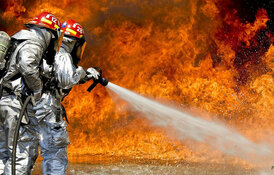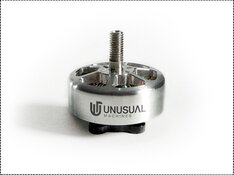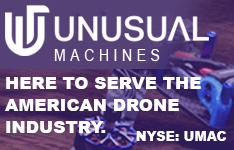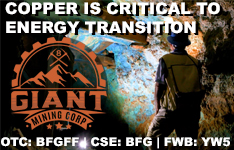The global drone industry continued to evolve rapidly in 2025, shaped by national security initiatives, wartime innovation, and an accelerating technological arms race. Recent developments underscored a growing divide between mass-market drone manufacturing and high-tech autonomous systems designed to withstand electronic warfare, with governments and militaries increasingly investing in domestic capabilities and defense innovations.
According to a June 7 report in The New York Times, U.S. President Donald Trump signed executive orders designed to bolster domestic drone manufacturing, citing the need to reduce reliance on foreign suppliers and secure national supply chains. The orders directed federal agencies to prioritize the purchase of U.S.-made drones and allowed for expanded commercial drone usage, including beyond-visual-line-of-sight operations for public safety officials. “Building a strong and secure domestic drone sector is vital to reducing reliance on foreign sources,” one of the executive orders stated.
Congressional Focus on Foreign Supply Risks
These policy shifts came amid longstanding concerns about the dominance of Chinese manufacturers like DJI and Autel in the global drone market. The U.S. Congress has already moved to assess whether equipment from these manufacturers poses a risk, with legislation in place to restrict such equipment if no determination is made within a year.
In a June 8 article, The New York Times reported on Ukraine’s Magura V7 unmanned marine drone, a 24-foot speedboat equipped with antiaircraft missiles. Ukrainian officials said the vessel shot down two Russian Su-30 jets, marking the first reported instance of a drone boat successfully targeting fighter aircraft. “These drones represent the future,” said Andriy Yusov, spokesperson for Ukraine’s military intelligence agency.
The executive actions also addressed the growing threat of unauthorized drone flights over sensitive sites. The Federal Aviation Administration (FAA) was instructed to restrict airspace over critical infrastructure and support enforcement of civil and criminal penalties for drone-related violations. The FAA estimated over one million drones were registered in the United States by spring 2025, with more than 400,000 for commercial use. However, the FAA acknowledged challenges in monitoring all airborne drones due to gaps in registration coverage.
Parallel to policy advancements, drone warfare and innovation have reshaped modern conflict. Ukraine has emerged as a hub for drone development, blending low-cost production with cutting-edge capabilities. In a June 8 article, The New York Times reported on Ukraine’s Magura V7 unmanned marine drone, a 24-foot speedboat equipped with antiaircraft missiles. Ukrainian officials said the vessel shot down two Russian Su-30 jets, marking the first reported instance of a drone boat successfully targeting fighter aircraft. “These drones represent the future,” said Andriy Yusov, spokesperson for Ukraine’s military intelligence agency.
This sea-based advancement coincided with broader operational strategies involving drone swarms and hidden mobile launch sites, enabling strikes deep into Russian territory. At sea, Ukraine has used various versions of the Magura drone to damage or sink an estimated 16 Russian warships since the war began.
Further details on Ukraine’s drone development were outlined in a June 2 article from IEEE Spectrum, which highlighted the use of AI-driven navigation systems by Estonian firm KrattWorks. Their Ghost Dragon drone, deployed in Ukraine, is capable of navigating without access to satellite signals by comparing real-time imagery to stored satellite maps. “Even if it gets lost, it can recognize some patterns, like crossroads, and update its position,” said Martin Karmin, KrattWorks’ chief operating officer.
Drone autonomy has been viewed as critical in overcoming electronic jamming, which has become prevalent on both sides of the conflict. Ukraine reportedly loses as many as 10,000 drones per month to jamming. In response, both Ukraine and Russia have developed workarounds. Russia has deployed fiber-optic-controlled drones to avoid jamming, while Ukraine has leaned into developing lightweight autonomous drones for reconnaissance and offensive operations. Ukrainian startups, constrained by budget but fueled by a large domestic engineering workforce, have turned to in-house hardware and software solutions to drive costs down.
AI-Powered Navigation Beats Jamming
As described by IEEE Spectrum in that June 2 post, the future of drone warfare may include systems that can autonomously identify and strike targets with minimal human oversight. Auterion, a U.S.-based drone software firm, provided technology that helped Ukraine destroy tanks equipped with jamming devices using so-called “terminal guidance.” CEO Lorenz Meier said, “The operator would only decide the area where to strike, but the decision about the target is made by the drone.”
While much of the focus has been on aerial and marine drones, defensive drone countermeasures also saw historic developments. On May 28, The Jerusalem Post reported that Israel’s Iron Beam laser defense system and its sister platform, Lite Beam, intercepted dozens of hostile drones during the ongoing conflict. The Israeli Defense Forces said 35 Hezbollah drones were downed by the laser system, which is part of a broader defense framework that brought down nearly 1,000 drones in total from various fronts.
Defense Ministry officials stated that the Lite Beam system demonstrated “hard kill” capabilities, physically destroying threats rather than disrupting them with electronic interference, and that it could be integrated into mobile platforms. Brig.-Gen. Yehuda Elmakayes said Israel had deployed several high-power laser prototypes during the war and achieved “the world’s first successful high-power laser interceptions on the battlefield.”
The technology, while not yet a complete replacement for traditional missile defenses like Iron Dome, has shown promise in addressing short-range threats and reducing costs associated with traditional interceptors, which can cost US$50,000 to US$100,000 per use.
Against a backdrop of rapid technological advances and shifting regulatory landscapes the following three companies have emerged in developing the drone market's emerging generation.
Red Cat Holdings Inc. (RCAT:NASDAQ)
Red Cat Holdings Inc. (RCAT:NASDAQ) announced its official entry into the maritime autonomy market by expanding its multi-domain family of systems with a new line of unmanned surface vessels (USVs). According to the company, these battle-tested USVs “reinforce its position as a provider of comprehensive, interoperable unmanned systems for air, land, and sea operations.” The move was framed as a response to rising geopolitical tensions and U.S. defense priorities aimed at reestablishing American maritime dominance.
The new USVs have logged over 10,000 hours in actual combat missions, undergo daily combat testing, and can operate autonomously or in manned-unmanned teaming configurations. Red Cat plans to begin production in the third quarter of a seven-meter Expeditionary Multi-Role Craft designed for high-speed, long-range operations. This platform will accommodate larger payloads, offer extended endurance, and support deep-strike, anti-ship, and coastal interdiction missions.
In a May 15 research note, Michael Latimore of Northland Capital Markets reiterated an Outperform rating on Red Cat and set a US$13 price target. He noted that the company’s partner brings proven software, AI, and intelligence capabilities, claiming its systems have destroyed a quarter of the Russian fleet in the Ukraine conflict and that Red Cat had already bid on a large contract.
This expansion builds on recent integrations with Ocean Power Technologies’ WAM-V and PowerBuoy platforms, which enable Teal-2 drones to perform air, sea, and subsea missions. By leveraging proven USV technology and scalable production plans, Red Cat positioned itself to address urgent operational requirements of U.S. and allied naval forces.
According to Refinitiv, management and insiders own just under 19% of Red Cat, including CEO Thompson, who holds 14.46%.
Institutional investors own about 33.69%. The Vanguard Group Inc. has 2.93%, AWM Investment Co. owns 2.10%, and Pelion Venture Partners has 1.05%.
The rest is in retail.
The drone company has 85.62M outstanding shares and 69.19M free float traded shares. Its market cap is US$497.87M. Over the past 52 weeks, its stock has traded between US$0.75 and US$15.27 per share.
Unusual Machines Inc. (UMAC:NYSEAMERICAN)
Unusual Machines Inc. (UMAC:NYSEAMERICAN) signed a lease for a 17,000-square-foot drone motor production facility in Orlando, Florida, marking a major step in onshoring critical components. According to a June 10 news release, the plant will house high-performance brushless motor winding equipment, enabling both large-scale output and small customized batches.
 Streetwise Ownership Overview*
Streetwise Ownership Overview*
Unusual Machines Inc. (UMAC:NYSEAMERICAN)
“This factory is a major milestone in our strategy to rapidly onshore drone component manufacturing,” Chief Executive Officer Allan Evans said. He added that solving “one of the major pain points in the American drone supply chain” would strengthen U.S. drone resilience.
Vice President of Manufacturing Brad Mello noted that the facility’s flexible work cells would support three core motor sizes - 2207, 2807 and 3220 - before ramping up to over 50,000 motors per month. In addition to building standard Kv-rated motors, the plant will produce customer-specific variants. Unusual Machines will source bearings, magnets and stators both domestically and internationally to mitigate supply-chain disruptions, offering “Made-in-USA” motors alongside globally sourced options for different regulatory needs.
As outlined in the company investor presentation, Unusual Machines serves three segments of the drone market: retail sales through brands like Fat Shark and Rotor Riot; enterprise B2B components such as flight controllers and analog cameras; and fleet and airspace management software, pending completion of its Aloft Technologies Inc. acquisition. As of March 2025, enterprise hardware accounted for 13% of revenue. Evans wrote in a May 8 shareholder letter that the company “seeks to be a dominant component supplier to the fast-growing, multibillion-dollar U.S. drone industry and the global defense business.”
Market analysts have taken note. According to a Tech Sci Research report, the global drone components market was forecast to grow at an 11.4% compound annual growth rate through 2028. Future Market Insights and Cognitive Market Research estimated that North America held a 40% share of the $2.4 billion global drone-motor market in 2024, with an expected 18.7% CAGR through 2032. Litchfield Hills Research’s Barry Sine rated Unusual Machines Buy in a May 9 research report, citing its strong balance sheet, expanding manufacturing capacity and a potential boost from the U.S. Department of Defense’s roughly $1 trillion fiscal-year 2026 budget. Technical analyst Clive Maund also remained bullish, noting June volume breakouts “very likely” to drive the stock above resistance.
According to Refinitiv, seven insiders own 8.37% of Unusual Machines. They are CEO Evans, Chief Financial Officer Brian Hoff, Chief Operating Officer Andrew Camden and all four directors.
Numerous institutional investors, including The Vanguard Group and BlackRock Institutional Trust Co., hold 4.9%. The rest is in retail.
Unusual Machines has 24.83 million (24.83M) outstanding shares. Its market cap is $182.01M. Its 52-week range is $1.13–23.62 per share.
DroneShield Ltd. (DRO:ASX; DRSHF:OTC)
DroneShield Ltd. (DRO:ASX; DRSHF:OTC) scaled its counter-drone offerings with the launch of an AI-driven 3D Planning Tool on its DroneShield Access Portal. According to a June 10 release, the tool enables clients to design and visualise bespoke counter-unmanned aircraft systems (C-UAS) in a unified 3D environment, mapping coverage areas, power, network and infrastructure requirements. “This provides the shortest path between our R&D teams and the end user in the field,” Chief Technology Officer Angus Bean said, noting that the platform also supports two-way planning and integrates with the firm’s firmware updater and UAS Incident Platform for real-time threat reporting.
 Streetwise Ownership Overview*
Streetwise Ownership Overview*
DroneShield Ltd. (DRO:ASX; DRSHF:OTC)
In its 2024 annual results, DroneShield reported record revenue of AU$57.5 million, up from AU$54.1 million in 2023, and saw Software-as-a-Service revenues double to AU$2.8 million. As of February 18, 2025, the company held AU$215.2 million in cash, which management said would underwrite ongoing AI development and global expansion. Hardware production capacity had also increased, with the company now able to manufacture up to AU$500 million worth of C-UAS equipment annually.
DroneShield’s sales pipeline reached a record AU$1.2 billion as of early 2025, reflecting defined opportunities across North America, Europe, Asia and Latin America. Recent contract wins included AU$9.7 million in Latin America, AU$8.2 million under NATO’s framework agreement and AU$11.8 million in the Asia-Pacific region. The company also secured a law-enforcement contract in Australia valued at over US$1 million, deploying its sovereign, AI-powered DroneGun Mk4 and DroneSentry systems to protect critical infrastructure and public events.
Analysts remained positive on DroneShield’s outlook. On February 26, Shaw and Partners’ Abraham Akra reaffirmed a Buy rating with a AU$0.90 price target, citing growing revenue visibility and a diversified global sales mix. DroneShield’s robust cash position, expanding manufacturing footprint and AI-enhanced product suite positioned it to capitalise on rising C-UAS demand across military, government and commercial markets.
Recent filings reveal that Vanguard Group has become a substantial shareholder in DroneShield, holding a 5.47% stake. Regal Funds Management holds approximately 9.5%, while JP Morgan Chase owns 6.34%.
These holdings add to the company’s strategic investors, which currently control over 11% of DroneShield’s stock. Management and insiders hold 5.68%, according to the most recent company presentation.
DroneShield has 872.12 million outstanding shares and 782.40 million free float traded shares. Its market cap is approximately AU$1.5 billion, and its sales pipeline has grown to AU$2.3 billion. The company’s 52-week share price range is AU$0.5850 to 2.72.
Want to be the first to know about interesting Technology investment ideas? Sign up to receive the FREE Streetwise Reports' newsletter.
Subscribe
Important Disclosures:
- Unusual Machines is a billboard sponsor of Streetwise Reports and pays SWR a monthly sponsorship fee between US$4,000 and US$5,000.
- As of the date of this article, officers and/or employees of Streetwise Reports LLC (including members of their household) own securities of Unusual Machines, DroneShield, and Red Cat Holdings.
- James Guttman wrote this article for Streetwise Reports LLC and provides services to Streetwise Reports as an employee.
- This article does not constitute investment advice and is not a solicitation for any investment. Streetwise Reports does not render general or specific investment advice and the information on Streetwise Reports should not be considered a recommendation to buy or sell any security. Each reader is encouraged to consult with his or her personal financial adviser and perform their own comprehensive investment research. By opening this page, each reader accepts and agrees to Streetwise Reports' terms of use and full legal disclaimer. Streetwise Reports does not endorse or recommend the business, products, services or securities of any company.
For additional disclosures, please click here.





































